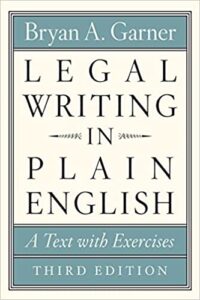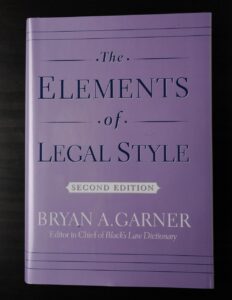Legal Writing in Plain English, Third Edition: A Text with Exercises
Legal Writing in Plain English takes a practical approach to legal writing. Deriving as it does from the author’s three decades of experience working with law students and—in far greater numbers—practicing lawyers and judges. So the book is intended not just for law students and paralegals but also for practitioners—even experienced ones. Practical exercises accompany each section of the book, designed especially for writing classes or informal groups of legal writers who meet periodically to work through them.
The book’s organization reflects the different types of writing that lawyers do. It begins with principles that apply to virtually all legal writing. Others apply mostly—though not quite exclusively—to analytical and persuasive writing. Still others apply mostly to transactional drafting, though these techniques also address problems that occasionally arise in the other types of legal writing. Then there are two other groupings of techniques: those that lead to readable typography and those that lead to ongoing improvement.
Much of the advice in this book depends on—and even promotes—sound legal analysis. That might not be what people expect from a book on legal writing. Yet many sections are essentially about thinking straight. This is crucial, since it’s impossible to separate good writing from clear thinking.
Finally, a word about “plain English.” The phrase certainly shouldn’t connote drab and dreary language. Actually, plain English is typically quite interesting to read. It’s robust and direct—the opposite of gaudy, pretentious language. You achieve plain English when you use the simplest, most straightforward way of expressing an idea. You can still choose interesting words. But you’ll avoid fancy ones that have everyday replacements meaning precisely the same thing.
If you buy using links on this page, we may receive affiliate commission, which supports our work.



